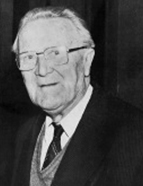

Returning to France in 1935, Léon Bourdon became an assistant professor of Portuguese at the University of Poitiers, a role he held until the outbreak of the Second World War, which led to his mobilisation from 1939 to 1942. In that same year, he was appointed to the newly established chair of Portuguese at the University of Toulouse, where he successfully cultivated a significant group of Lusophile students. During his time at the University of Toulouse, he also worked with Joaquim Veríssimo Serrão, who joined as a lecturer in Portuguese in 1950. In 1953, Bourdon left Toulouse to take up the position of chair of Portuguese and Brazilian Languages and Literatures at the Sorbonne, as well as its Institute of Portuguese and Brazilian Studies. He succeeded Georges Le Gentil (1875–1953), a pioneering figure in Lusophone studies in France. Bourdon served as director of the Institute until his retirement in 1969.
Bourdon's research in Lusophone studies spanned the 15th to the early 19th century, with a particular focus on Portuguese maritime expansion during the 16th and 17th centuries. He is credited with the French translations and annotations of the Crónica da Guiné [Chronicle of Guinea] by Gomes Eanes de Zurara (1410–1474) and two works by André Donelha ( Descrição da Serra Leoa [Description of Sierra Leone] and Rios da Guiné e de Cabo Verde [Rivers of Guinea and Cape Verde]), who lived around 1560–1634. The first translation was published in 1960, followed by the other two in 1977. The Portuguese presence in Asia, particularly in Japan, held a prominent place in Léon Bourdon's work. He published several articles on the subject, most notably his seminal doctoral thesis, La Compagnie de Jésus et le Japon (1547-1570) , presented in 1949 at the former Faculté des Lettres de Paris [Faculty of Arts and Humanities] at the Sorbonne. This landmark contribution to the field was not published in near entirety until 1993, in a collaboration between the Comissão Nacional para as Comemorações dos Descobrimentos Portugueses [National Commission for the Commemoration of the Portuguese Discoveries] and the Centro Cultural Português da Fundação Calouste Gulbenkian [Portuguese Cultural Centre of the Calouste Gulbenkian Foundation] in Paris. It is worth noting that Bourdon maintained close ties with the Portuguese Cultural Centre from its inception in 1965. These connections were largely facilitated by his friendship with José Vitorino de Pina Martins (1920–2010), who directed the Centre from 1972 to 1983 and whose own doctoral thesis had been supervised by Bourdon. This special relationship between Bourdon and the Cultural Centre was honoured in 1982 with the publication of the 17th volume of the Arquivos do Centro Cultural Português [Archives of the Portuguese Cultural Centre], dedicated to him. Many of Bourdon’s publications on Portuguese history and culture are now housed in the library of the former Centro Cultural Português , recently renamed the Fundação Calouste Gulbenkian-Delegação [Calouste Gulbenkian Foundation-Delegation] in France. Additionally, another volume stemming from his doctoral research, Alexandre Valignan: visiteur de la mission japonaise de la Compagnie de Jésus (1573- 1583) , devoted entirely to Alexandre Valignano (1539–1606), remains unpublished to this day. Some typewritten copies of Léon Bourdon’s works are available for consultation in the library of Sorbonne Paris I .
This work is financed by national funds through FCT - Foundation for Science and Technology, I.P, in the scope of the projects UIDB/04311/2020 and UIDP/04311/2020.
